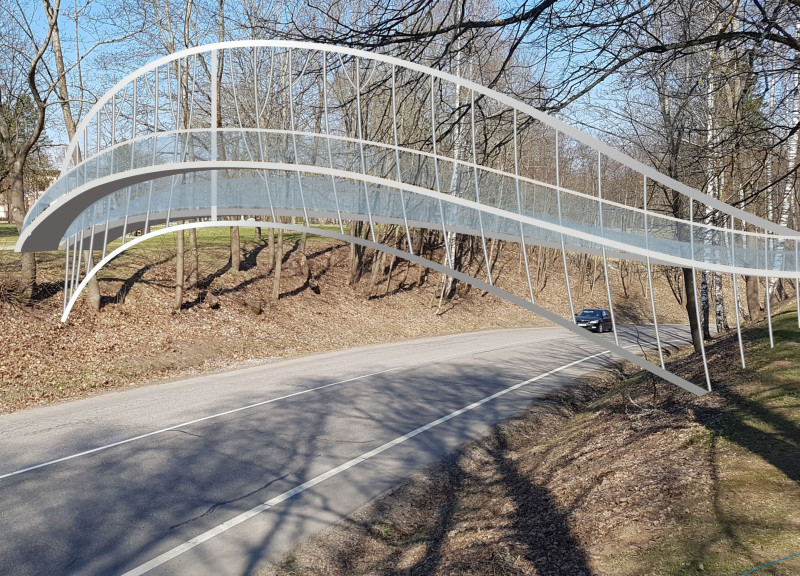5 key facts about this project
The Gauja National Park Footbridge is located within the scenic setting of Gauja National Park. It is designed to provide accessibility for pedestrians and cyclists, featuring a dual-level layout that accommodates a variety of users. The design aims to connect the built environment with the natural landscape, creating a harmony that feels intentional and respectful to the surroundings.
Design Inspiration
The bridge form takes cues from natural elements, mimicking the shapes of tree trunks and branches. This choice enhances the visual integration of the structure, allowing it to blend into the landscape. The design reflects a commitment to maintaining continuity with nature, emphasizing the relationship between the bridge and its environment.
Lighting and Cultural Context
Lighting is an important aspect of the design, inspired by local cultural symbols from Sigulda. These lighting features are functional, helping to illuminate the path for users, while also adding character to the bridge. They aim to create a connection with the local community, enhancing the overall experience for those who use the structure.
Material Selection
The bridge is constructed from stainless steel, known for its durability and resistance to weather. This material was chosen not only for its strength but also for its ability to reflect light, further connecting the bridge to its surroundings. The railings consist of glass on the interior and vertical bars on the exterior, promoting safety while allowing clear views of the natural beauty around it.
Visual Connectivity
The design includes elements that encourage a strong connection between users and the landscape. The transparency of the glass railing offers unobstructed sightlines, allowing pedestrians and cyclists to take in the sights of Gauja National Park as they cross the bridge. This approach supports an immersive experience, inviting users to appreciate the environment while moving through the space.





















































